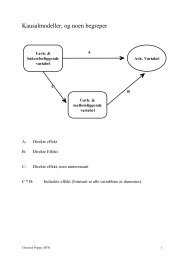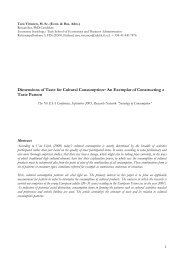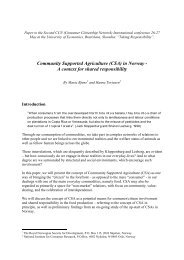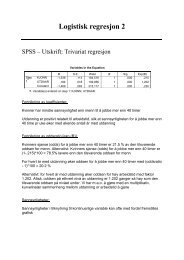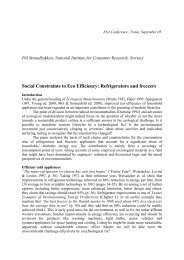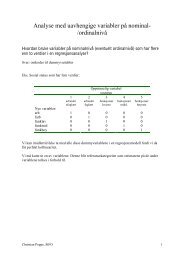an investigation of domestic laundry in europe - habits ... - SIFO
an investigation of domestic laundry in europe - habits ... - SIFO
an investigation of domestic laundry in europe - habits ... - SIFO
You also want an ePaper? Increase the reach of your titles
YUMPU automatically turns print PDFs into web optimized ePapers that Google loves.
106An <strong><strong>in</strong>vestigation</strong> <strong>in</strong>to the <strong>domestic</strong> <strong>laundry</strong> <strong>habits</strong> <strong>in</strong> Europewhich <strong>in</strong> turn is likely to reduce their contribution to the degree <strong>of</strong> chemicaldis<strong>in</strong>fection <strong>in</strong> the wash<strong>in</strong>g process. The results from the wash<strong>in</strong>g efficiencytests <strong>in</strong> chapter 3 show that there are great variations <strong>in</strong> the results among thecountries <strong>in</strong>vestigated. The traditional Sp<strong>an</strong>ish detergent tested has betterwash perform<strong>an</strong>ce th<strong>an</strong> the compact detergent tested. Greece, on the otherh<strong>an</strong>d, has a compact detergent where the tests show signific<strong>an</strong>tly better resultsth<strong>an</strong> for the traditional detergent. In Spa<strong>in</strong> the traditional detergent is a bestseller <strong>an</strong>d consumers use low temperatures, whereas the Greeks use highertemperatures <strong>an</strong>d detergents are designed to perform best at high temperatures.As the results verify, detergents are more likely to be adjusted to themarket th<strong>an</strong> to considerations <strong>of</strong> susta<strong>in</strong>ability.At low wash<strong>in</strong>g temperatures, bleach systems based on persalts are much lesseffective for soil removal <strong>an</strong>d dis<strong>in</strong>fection. This adverse effect c<strong>an</strong> be compensatedfor subst<strong>an</strong>tially by the addition <strong>of</strong> bleach activators, e.g. tetraacetylethylenediam<strong>in</strong>e(TAED). At low wash<strong>in</strong>g temperatures the effect <strong>of</strong> activatedbleach systems decreases as well. Detergents for coloured articles me<strong>an</strong>tfor wash<strong>in</strong>g temperatures <strong>of</strong> 60°C or less do not conta<strong>in</strong> bleach <strong>an</strong>d will thereforeshow poor properties <strong>of</strong> dis<strong>in</strong>fection.F<strong>in</strong>ally it should be mentioned that the focus on eco-labels, such as the NordicSw<strong>an</strong> <strong>an</strong>d the EU-flower, has also contributed to a more susta<strong>in</strong>able development.The numbers <strong>of</strong> detergents that are listed as more environmentallyfriendly has <strong>in</strong>creased <strong>in</strong> recent years. [26].5.2 Consumer <strong>in</strong>terests <strong>an</strong>d safety related to hygieneThe boil wash launder<strong>in</strong>g process, which was used traditionally, showed appropriatecle<strong>an</strong><strong>in</strong>g properties comb<strong>in</strong>ed with excellent hygiene efficacy. Asmentioned <strong>in</strong> the previous sections, lower wash temperatures result <strong>in</strong> lowerhygienic quality. Thus it may be assumed that for <strong>domestic</strong> textile launder<strong>in</strong>gthe measures to reduce energy consumption may have stressed the conditionsfor proper hygiene.Until recently, however, little attention has been paid to the hygienic properties<strong>of</strong> daily modern launder<strong>in</strong>g practices. As clothes hygiene is the majorbenefit <strong>of</strong> launder<strong>in</strong>g (apart <strong>of</strong> the removal <strong>of</strong> visible soil <strong>an</strong>d sta<strong>in</strong>s), more<strong>in</strong>sight <strong>in</strong> the hygienic implications <strong>of</strong> modern launder<strong>in</strong>g practices is neededfor the sake <strong>of</strong> policy measures on public health <strong>an</strong>d environmental policyissues. In order to reduce household water consumption, different new type <strong>of</strong>




